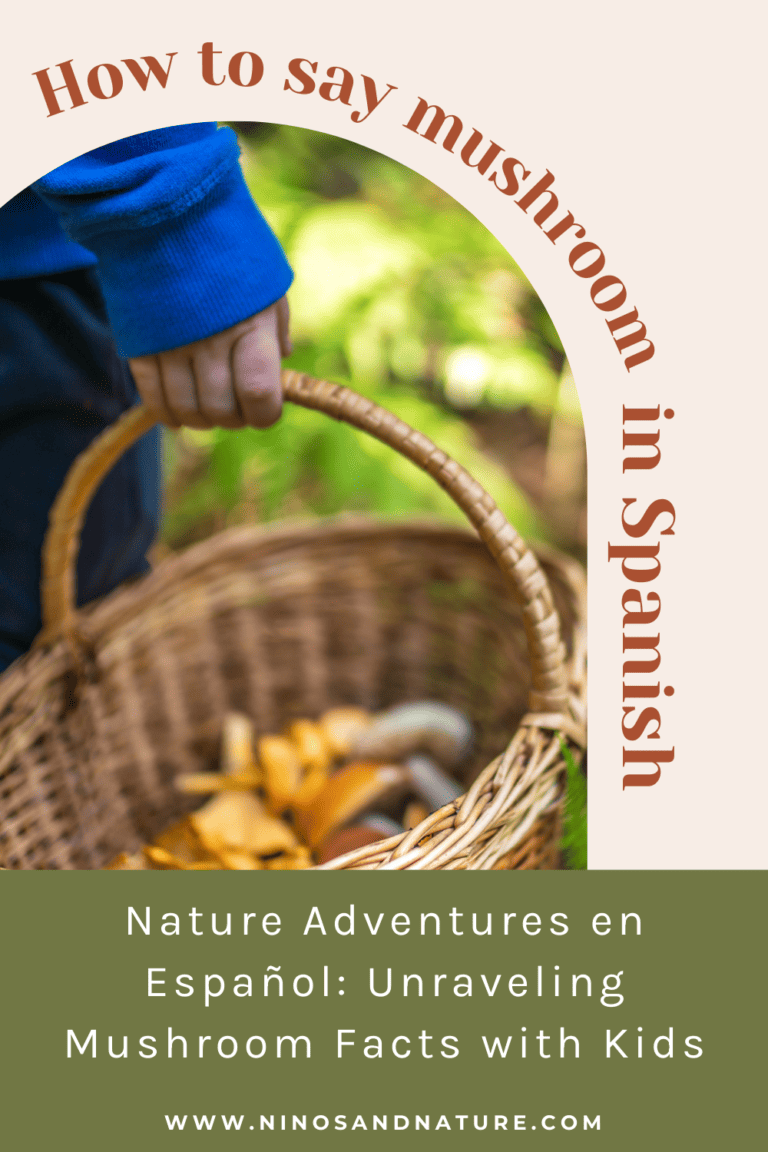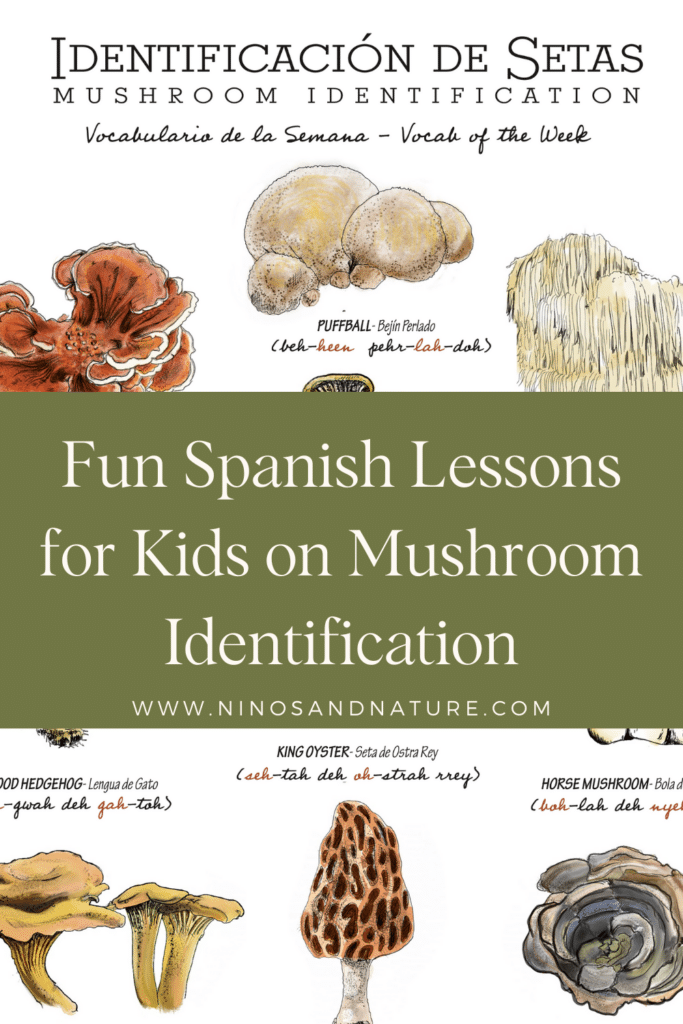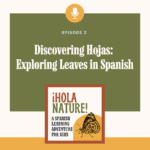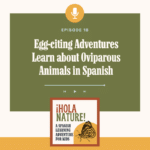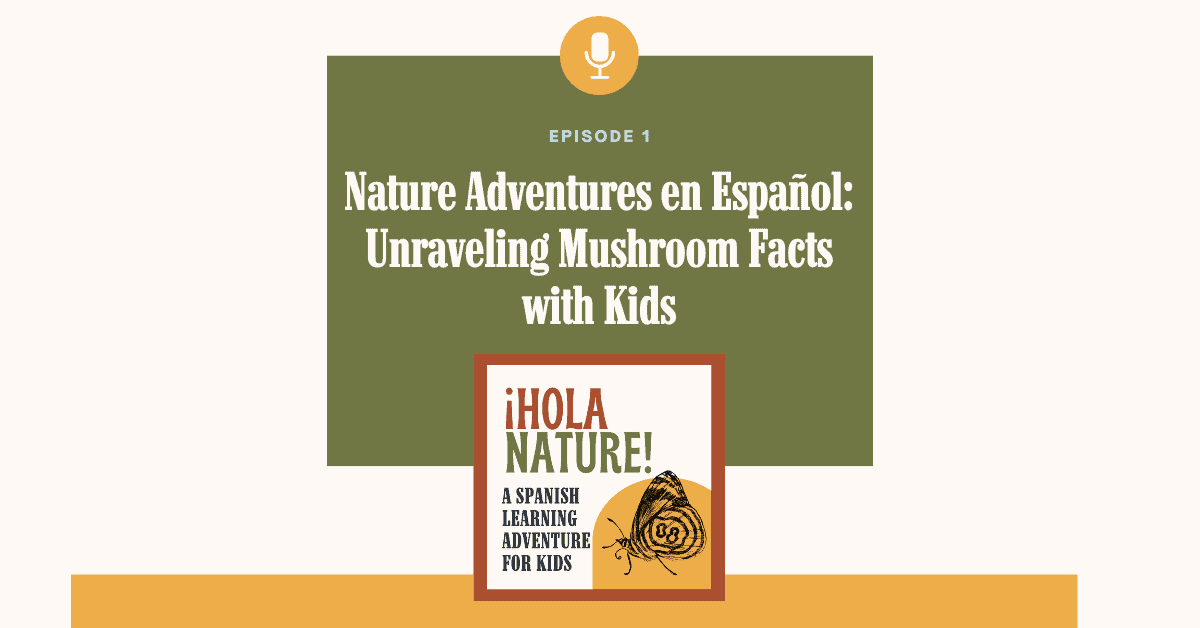
Spanish Nature Lessons for Kids – How to Say Mushroom in Spanish
In this post: A review of Episode 1 of the Nature Based Spanish Learning Podcast for Kids, ¡Hola Nature! This episode is for teaching kids about mushrooms in Spanish. Post contains affiliate links.
In our FIRST EVER episode of ¡Hola Nature! we explore the magical world of mushrooms. Mushrooms are fascinating organisms that come in all sorts of shapes and sizes. In this blog post, we’ll briefly review everything we learned in the podcast. We’ll learn different words for mushrooms in Spanish that are easy for kids, as well as a poem in Spanish all about a mushroom.
Don’t forget to keep scrolling to get your ¡Hola Nature! Podcast freebie to use as you tune in to this week’s episode!
So, let’s get started and find out the different ways to say mushroom in Spanish!
Table of Contents
How do you say mushroom in Spanish?
In the podcast, I talk all about three different ways to say mushroom in Spanish, and WHEN you would use each one. Remember that Spanish is spoken in over 20 countries all over the world, there is bound to be cultural uses depending on where you are speaking. In general though, here are three different ways to talk about mushrooms in Spanish.
1. Champiñón (cham-pee-NYON)
2. Seta (SEH-tah)
3. Hongos (OHN-gos)
If you want to learn the differences of when to use what word, you’ll need to tune in to Episode 1 of ¡Hola Nature! Keep scrolling if you want to find out different types of mushrooms and learn about mushroom identification in Spanish.
Spanish Poem about Mushrooms for Kids
Learning poetry and rhyme is one of my absolute favorite ways to teach kids Spanish. It increases their vocabulary exposure, has amazing repetition, and works really well with all kids (especially those that don’t love to sing!)
Below you’ll find the entire poem from this week’s episode, as well as the English translation. Want a super cute print out? Grab your Podcast Freebie below!
La Seta
Tiene la seta una capa roja
Con lunares blancas
Que, cuando llega el otoño,
Adorna los verdes campos.
Y cuando llueve, es paraguas
Y es sombrero si hace sol,
Para los animalitos que
Viven alrededor.
English Translation:
The mushroom has a red cap
with white dots.
And when autumn arrives,
It decorates the green fields.
And when it rains, it’s an umbrella
and a hat when it’s sunny
For all the litle animals
That live around.
Learn to Identify Mushrooms in Spanish
Foraging for mushrooms is such a fun activity for grown-ups and kids alike! I always recommend learning foraging skills in person from an expert to make sure you know your stuff before you ever eat anything in the wild. Here are the names of three common mushrooms that you can find in Spanish and English!
If you want to learn even more about mushroom identification, check out Spanish in the wild in autumn, en otoño. My bilingual Spanish curriculum is an amazing resource for learning more about the natural world en español and there are two in-depth nature study lessons on mushrooms!
Chicken of the Wood
Pollo del Bosque
(poh-yoh dehl bohs-keh)
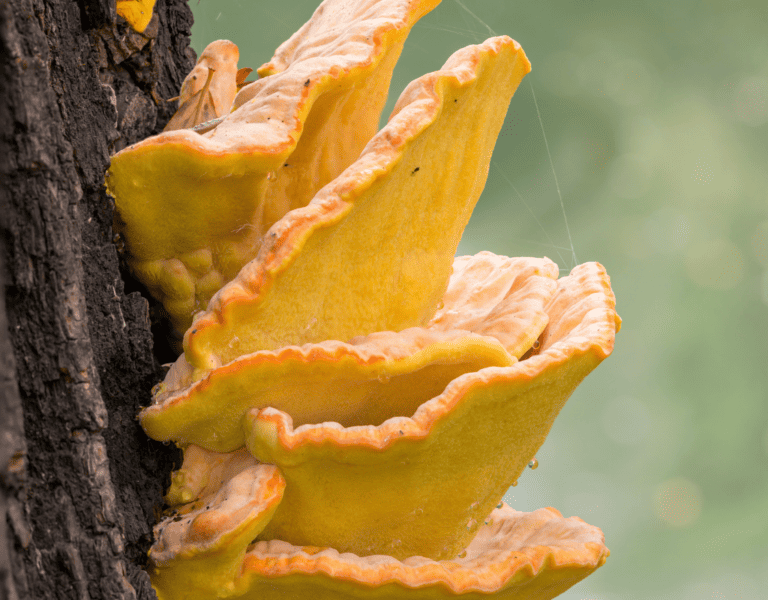
Morel
Colmenilla
(kohl-meh-nee-yah)

Chanterelle
Chantarela
(chan-tah-reh-lah)

Amazing Mushroom Books for Kids
Check out some of my favorite books in English and Spanish for learning all about mushrooms with kids! These books are amazing ways to start learning about mushrooms with kids in any bilingual home, and can help you get started on your foraging journey!
Tune in to Episode 1 of the ¡Hola Nature! Podcast
Want to learn more all about mushrooms in Spanish? Tune in to this week’s Spanish Learning Podcast episode as we learn all about mushrooms! With cool nature facts about mushrooms for kids in Spanish and silly characters that immerse your kids en español – this language adventure is guaranteed to teach your kids Spanish while they have fun.
Grab the ¡Hola Nature! Podcast FREEBIE
Every episode will have a free Spanish learning printable to use as home as you listen. Grab this week’s free mushroom coloring page, and Spanish poem print out, to enjoy as you learn Spanish at home with your kids.
Like this post? Share it & Save it!
